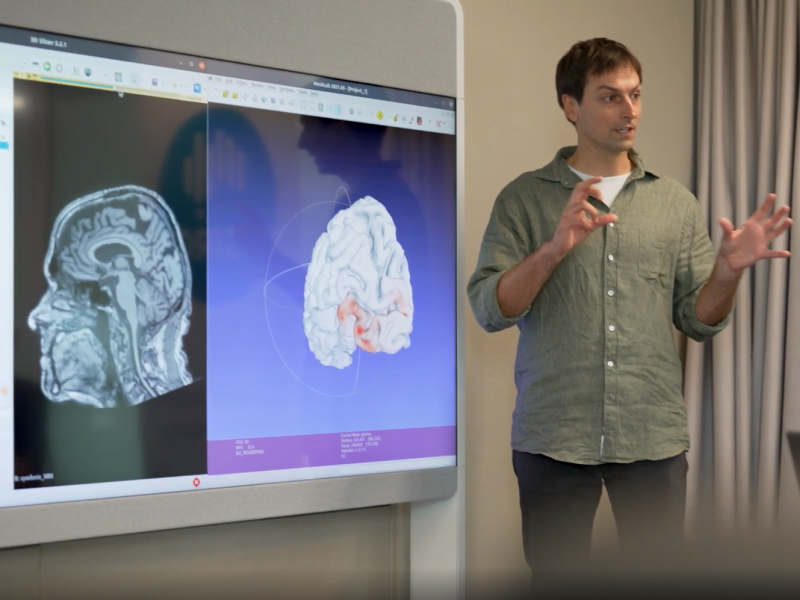The accuracy of the tools used in Alzheimer’s research can now be more easily compared thanks to work by researchers at CSIRO and the Queensland University of Technology.
Software tools used to track the thinning of the brain’s cortex in people suffering from neurodegenerative diseases only produce estimates based on data from magnetic resonance imaging (MRI).

To ensure these estimates are useful, the tools must be sensitive to very small changes in cortical thickness, often in the sub-millimetre range.
Prior to the work undertaken at CSIRO and QUT, sensitivity to change was determined by bench marking against real measurements of brain atrophy taken during post-mortem brain studies. However, this is prone to inaccuracies as brains immediately begin shrinking after death.
Published in the journal Medical Image Analysis in November last year, the researchers at CSIRO and QUT produced synthetic MRIs and used machine learning to simulate images of brain atrophy.
With the bench mark level of actual brain thinning depicted in the synthetic MRI images being controlled by the researchers, the sensitivity of existing tools to estimate brain thinning can now be tested.
Lead researcher and CSIRO’s Australian e-Health Research Centre scientist Dr Filip Rusak said the artificial MRI images were produced from an existing pool of commonly used and relatively inexpensive images.
“The findings will help researchers pick the right tools for the job. The right tool increases the chances of accurately assessing disease progression. So, there’s no need for new medical infrastructure,” he said.
In the paper, the authors clarify that the DL+DiReCT deep learning estimation method was more sensitive to cortical atrophy when compared to the HerstonNet and FreeSurfer methods.
According to CSIRO, Alzheimer’s accounts for 60 to 80 per cent of dementia cases. Dr Rusak also stated that early detection is key as cortical atrophy can begin up to 10 years before Alzheimer’s disease symptoms.
“Extremely accurate methods are needed to observe these signs in brain images when they begin to appear so they can be addressed earlier rather than later,” he said.
“Using the power of machine learning, we were able to produce a set of artificial MRI images of brains with predefined signs of neurodegeneration in the cortex region, the outer layer of the brain most affected by Alzheimer’s.
“Before these findings, there was no way to conclusively determine the sensitivity of the various methods used to measure cortical thickness in Alzheimer’s patients.”
The technique could be applied to other neurodegenerative diseases and could “potentially be used to predict the level of cortical degeneration a person can expect over time,” according to CSIRO.
The work was partly funded through the CRC-P grant awarded to medical AI startup Maxwell Plus for its work on an early-stage Alzheimer’s disease detection tool in collaboration with I-Med Radiology Network and CSIRO.
Initially, the $1.1 million grant was to support the trial and translation of machine learning technology developed at the CSIRO by Maxwell MRI for commercialisation, between 2018 and 2021. Overall, the total project value was $4.89 million.
According to QUT, the number of people suffering from dementia is expected to increase from 245,000 in 2009 to 1.13 million by 2050.
The University of Canberra’s National Centre for Social and Economic Modelling forecasts that the cost of Alzheimer’s disease to Australians will increase to $26.6 billion by 2041. This includes direct costs such as aged care and hospital services as well as indirect costs such as lost productivity and income support.
Do you know more? Contact James Riley via Email.

